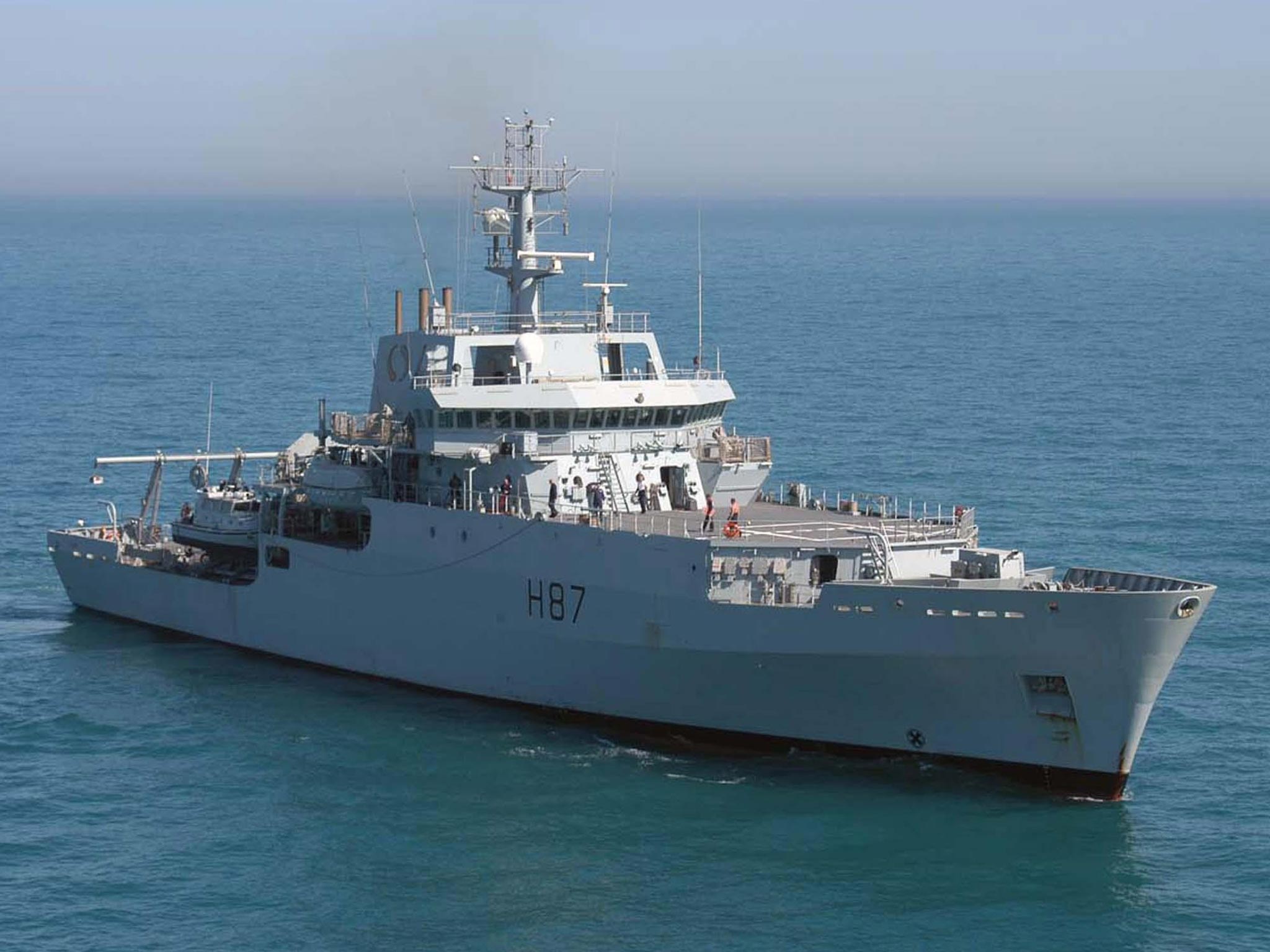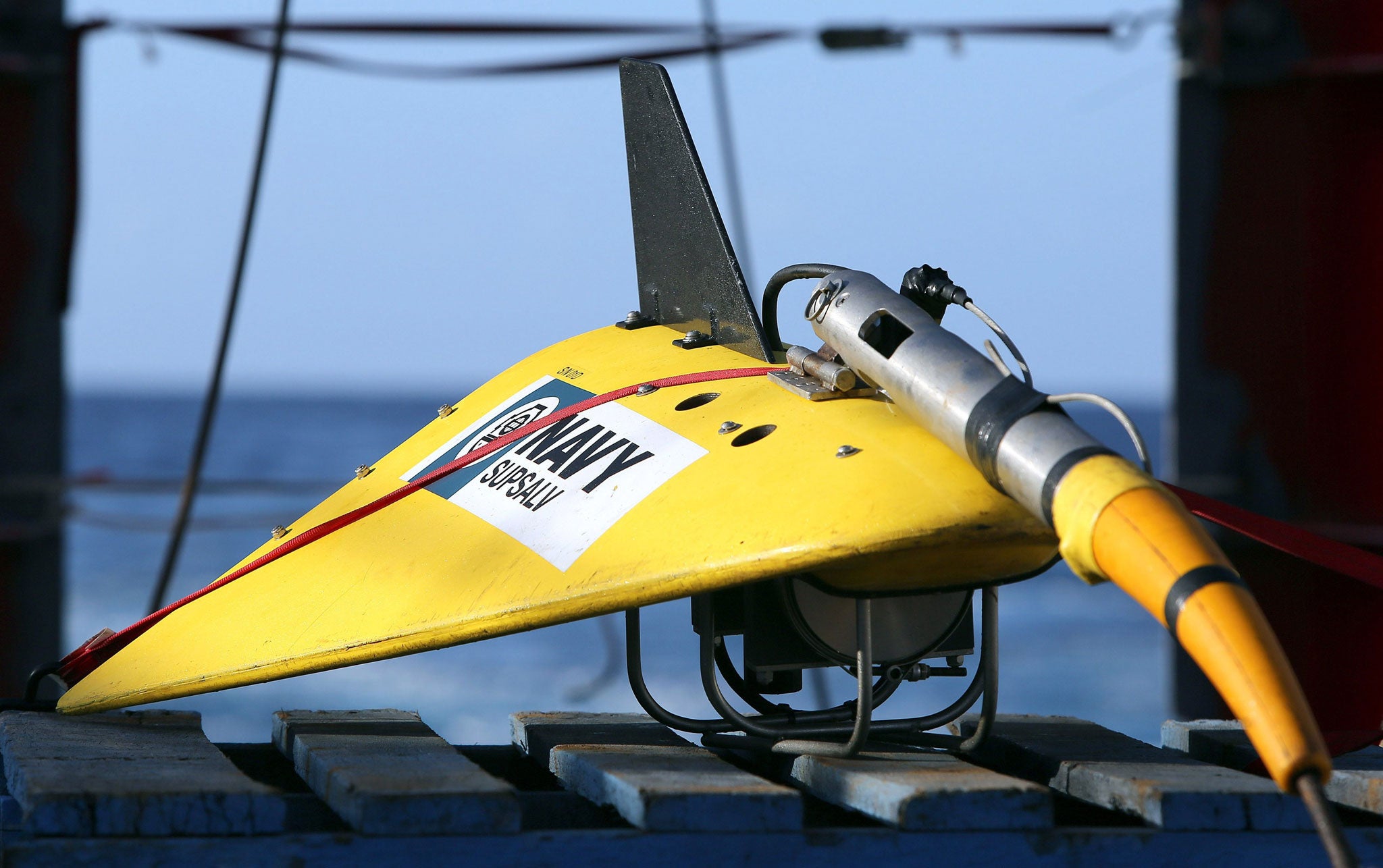Missing flight MH370: Royal Navy's HMS Echo joins race to verify black box 'pings' in search for missing jet in Indian Ocean
Three separate 'pings' have now been detected from deep in the Indian Ocean

Your support helps us to tell the story
From reproductive rights to climate change to Big Tech, The Independent is on the ground when the story is developing. Whether it's investigating the financials of Elon Musk's pro-Trump PAC or producing our latest documentary, 'The A Word', which shines a light on the American women fighting for reproductive rights, we know how important it is to parse out the facts from the messaging.
At such a critical moment in US history, we need reporters on the ground. Your donation allows us to keep sending journalists to speak to both sides of the story.
The Independent is trusted by Americans across the entire political spectrum. And unlike many other quality news outlets, we choose not to lock Americans out of our reporting and analysis with paywalls. We believe quality journalism should be available to everyone, paid for by those who can afford it.
Your support makes all the difference.As the authorities searching for missing Malaysia Airlines flight MH370 race to investigate a series of potential black box 'pings' in the Indian Ocean, a senior official has reportedly claimed that the plane was "steered" around Indonesian airspace.
A senior Malaysian government source reportedly said the Boeing 777 curved north of Indonesia after it dropped of Malaysian military radar, according to further analysis of tracking data from neighbouring countries.
It apparently avoided Indonesia and its airspace altogether before turning again towards the southern Indian Ocean. The source told CNN such a route may have been taken intentionally in order to avoid radar detection.
Meanwhile, the man responsible for leading the search in Australia said that sounds detected from deep within the Indian Ocean represent an "important and encouraging lead".
Three separate signals have now been detected by ships hunting for the wreckage of the Boeing 777, two of which came from within just 2 km (1.25 miles) of each other.
The Royal Navy's HMS Echo, which carries sophisticated equipment for detecting underwater signals, was tasked with heading to the investigate the small patch of the search zone.
On Sunday, an Australian ship also equipped with a so-called "pinger locator" received a third signal in a different part of the search area around 300 nautical miles (555 km) away.
The earlier signals were reported by a Chinese patrol vessel as being at the same frequency emitted by flight data recorders aboard missing planes - 37.5 kilohertz.
"This is an important and encouraging lead, but one which I urge you to treat carefully," retired Australian Air Chief Marshall Angus Houston told reporters in Perth.
He stressed the signals had not been verified as linked to Malaysia Airlines Flight 370, which was travelling from Kuala Lumpur to Beijing when it disappeared on 8 March with 239 people on board.
"We have an acoustic event. The job now is to determine the significance of that event. It does not confirm or deny the presence of the aircraft locator on the bottom of the ocean," Houston said, referring to each of the three transmissions.
Houston confirmed that the Chinese ship Haixun 01 detected a signal again on Saturday within 2 km (1.4 miles) of the original signal, for 90 seconds. He said that China also reported seeing white objects floating in the sea in the area. He added that HMS Echo was expected to arrive in the area within the next two days.
The Australian navy's Ocean Shield, which is carrying high-tech sound detectors from the US Navy, will also head there, but would first investigate the sound it picked up in its current region.

He said Australian air force assets were also being deployed on Sunday into the Haixun 01's area to try to confirm or discount the signals relevance to the search.
After weeks of fruitless looking, the multinational search team is racing against time to find the sound-emitting beacons and cockpit voice recorders that could help unravel the mystery of the plane. The beacons in the black boxes emit "pings" so they can be more easily found, but the batteries only last for about a month.
Investigators believe Flight 370 veered way off course and came down somewhere in the southern Indian Ocean, though they have not been able to explain why it did so.

The Chinese crew reportedly picked up the signals using a hand-held sonar device called a hydrophone dangled over the side of a small runabout — something experts said was technically possible but extremely unlikely.
The equipment aboard the Ocean Shield and the HMS Echo are dragged slowly behind each ship over long distances and are considered far more sophisticated than those the Chinese crew was using.
The Chinese Maritime Safety Administration (MSA) ship MV Xaixun 01 during a visit to Australia in 2013. Crew members reported hearing signals from within the search area on Friday and Saturday
Footage aired on China's state-run CCTV showed crew members in the small boat with a device shaped like a large soup can attached to a pole. It was hooked up by cords to electronic equipment in a padded suitcase as they poked the device into the water.
"If the Chinese have discovered this, they have found a new way of finding a needle in a haystack," said aviation expert Geoffrey Thomas, editor-in-chief of AirlineRatings.com. "Because this is amazing. And if it proves to be correct, it's an extraordinarily lucky break."
Additional reporting by AP
Subscribe to Independent Premium to bookmark this article
Want to bookmark your favourite articles and stories to read or reference later? Start your Independent Premium subscription today.
Join our commenting forum
Join thought-provoking conversations, follow other Independent readers and see their replies
Comments